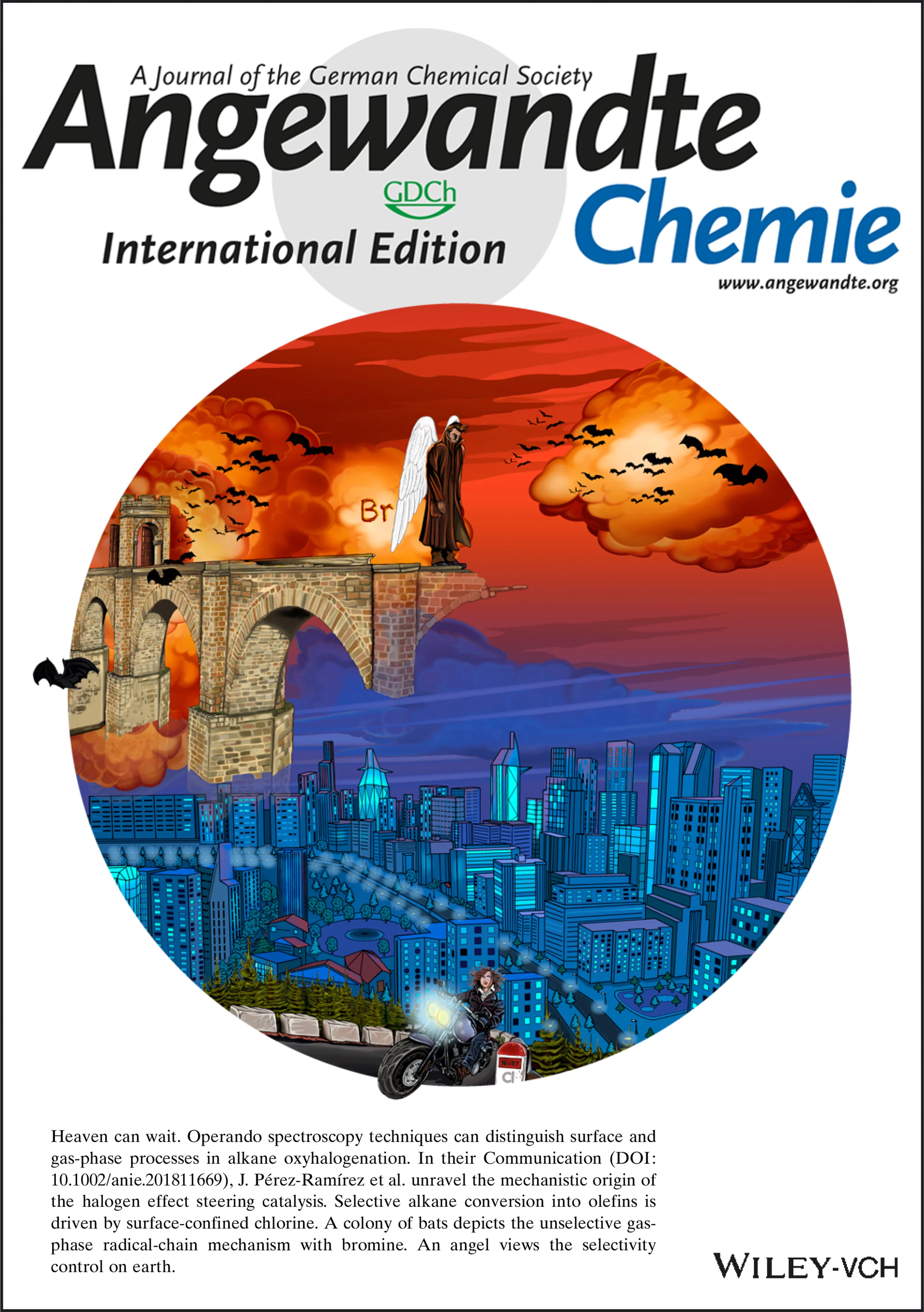Four groups, including the VUV Spectroscopy Group at LSF, have studied the oxychlorination and –bromination mechanism of ethane over an iron phosphate (FePO4) catalyst. Operando photoelectron photoion coincidence (PEPICO) spectroscopy at PSI was used together with kinetics and prompt-gamma activation analysis (PGAA) and supported by density functional theory (DFT) calculations. This multi-technique approach showed that the product distribution strongly depends on the halogen of choice. We demonstrated that the superior selectivity to olefins in oxychlorination is the consequence of a surface-confined reaction. By contrast, alkane activation follows a gas-phase radical chain mechanism in oxybromination and yields a mixture of alkyl bromide, cracking, and combustion products. This is an important insight as selectivities can only be improved by optimizing the catalyst if they are driven by surface and not gas-phase processes.
Contact
Prof. Dr. Javier Pérez-Ramírez
Advanced Catalysis Engineering
ETH Zürich
Telephone: +41 44 633 71 20
E-mail: jpr@chem.ethz.ch
Dr. Andras Bodi
VUV Spectroscopy Group
Paul Scherrer Institut
Telephone: +41 56 310 44 71
E-mail: andras.boedi@psi.ch
Original Publication
Halogen‐Dependent Surface Confinement Governs Selective Alkane Functionalization to Olefins
Guido Zichittella, Matthias Scharfe, Begoña Puértolas, Vladimir Paunović, Patrick Hemberger, Andras Bodi, László Szentmiklósi, Núria López, and Javier Pérez‐Ramírez
Angewandte Chemie International Edition, 2019, 58, 5877-5881.
DOI: 10.1002/anie.201811669
